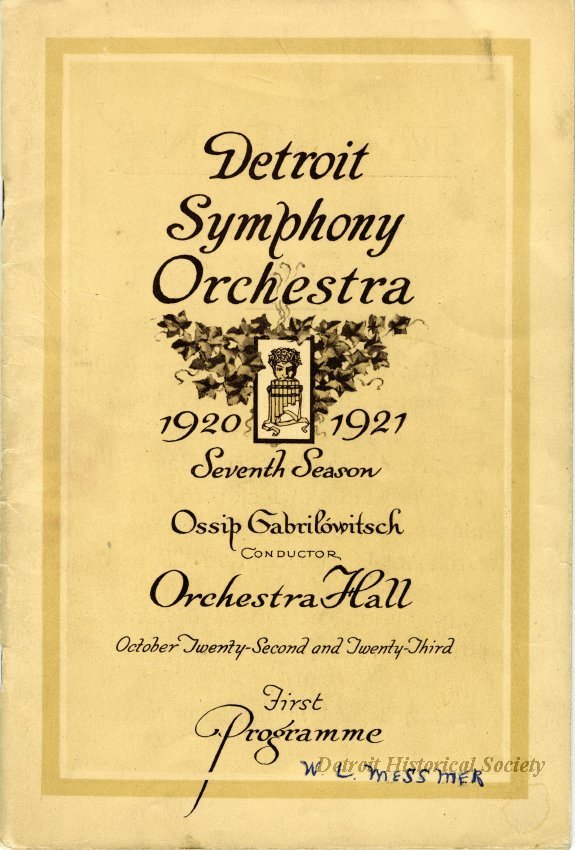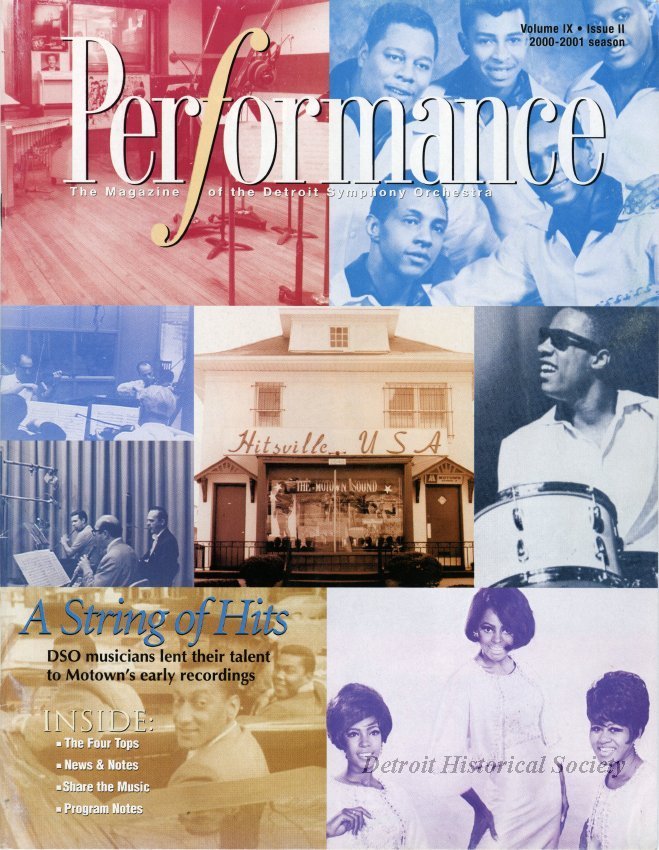The Detroit Symphony Orchestra (DSO) is the fourth oldest symphonic organization in the United States. On December 19, 1887, the DSO began its first subscription season, presenting Lindpaintner’s Overture to Faust, Beethoven’s Symphony No. 2, Berlioz’s The Damnation of Faust, Gottschalk’s Last Hope and Liszt’s Hungarian Rhapsody No. 2 at the Detroit Opera House. The Symphony in this iteration continued through 1910 when financial difficulties temporarily halted concerts. Four years later, ten prominent Detroit women raised the money to hire young organist and conductor Weston Gales, and the orchestra returned to the Opera House on February 26, 1914.
The orchestra quickly rose to prominence after the 1917 appointment of Ossip Gabrilowitsch. The famed Russian pianist counted among his friends Gustav Mahler and Sergei Rachmaninoff. His prominence in the field and personal connections helped the DSO attract preeminent performers like Igor Stravinsky, Richard Strauss, and Rachmaninoff. Solidifying the national reputation of the orchestra, the DSO performed the world’s first radio broadcast of a live symphony in 1922 in partnership with WWJ-AM.
Upon his hiring, one of Gabrilowitsch’s conditions was that a proper venue be built for performances. Famed Detroit architect C. Howard Crane designed the building, construction began in the summer of 1919, and four months later the acoustical marvel Orchestra Hall was ready. The inaugural concert took place on October 23, and the DSO remained in its Woodward Avenue home until 1939, when concerts were moved to Masonic Auditorium, then Music Hall, before settling at the Ford Auditorium in 1956. They returned to Orchestra Hall in 1989.
The DSO has had 17 music directors or principal conductors. Notable among them are Paul Paray, Antal Dorati and Neeme Järvi. Paray, a master of French repertoire, revived the organization after World War II with a series of recordings for Mercury Records that remain highly respected. Dorati elevated the orchestra to world class status with a European tour and the first Grand Prix du Disque for a spectacular recording of Stravinsky’s Rite of Spring. Järvi further enhanced the DSO’s profile with tours, award winning recordings of unsung American repertoire and by doubling concert subscriptions.
Despite artistic successes, the larger economic forces facing Detroit also affected the DSO. During the 2010 and 2011 seasons, in the midst of a serious recession, the orchestra’s musicians went on strike in response to management demands for a more than 30% wage cut, along with other changes. The difficulties of the strike as well as the new contract led to significant turnover among musicians.
Under music director Leonard Slatkin, the orchestra once again gained national attention. With the opening of the Max M. & Marjorie S. Fisher Music Center in 2003, adjacent to Orchestra Hall, the DSO boasts a world class facility for performance, rehearsal, recording and events. The orchestra has broadened its audience with live webcasts of concerts and the William Davidson Neighborhood Concert Series. Music director Jader Bignamini began his tenure in the 2020-2021 season.

